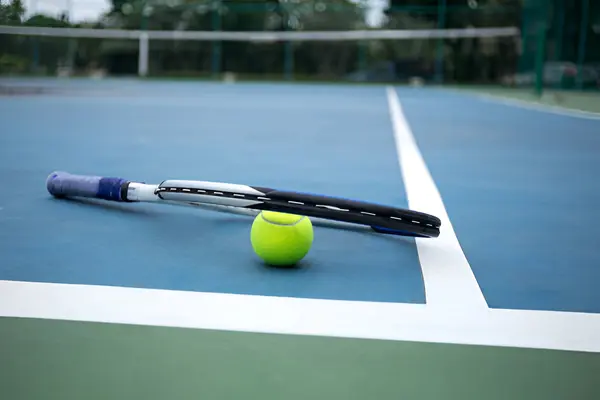Tennis Courts in London: Where Tradition Meets Topspin
Tennis has a somewhat lyrical quality. It all seems like a conversation without words, the way the ball flies across the net, the rhythm of footsteps on the court, the hush before a serve. And in London, this conversation between sport and legacy is more vivid than it has ever been.
London has made its mark in tennis history from the revered grass of Wimbledon to the small courts hidden within verdant gardens. How then do these courts operate? Which guidelines control our favourite game? More especially, where can you play?
Let's stroll carefully around London's tennis courts, where every rally tells a tale and elegance meets endurance.

A Quick Look at Tennis: The Game and Its Rules
You might have seen Serena deliver her famous serve or watched Federer slide across Centre Court. Fundamentally, though, tennis is a basic game-easy to learn, difficult to perfect.
Trying to out maneuver their opponent, two (or four) players strike a felt-covered ball over a net. The aim is Points of win. Win contests. Set winners. Get the game under control.
- A match is usually played in best-of-three or best-of-five sets .
- To win a set, you need to win six games , leading by at least two.
- Points are scored as 15, 30, 40, and game -a scoring system that, yes, still confuses new players.
The court? That's your battlefield. And like every great battle, the terrain matters.
The Tennis Court: Dimensions, Design, and Details
Imagine a rectangle-clean, crisp lines, a net at the center. That's your tennis court.
But it's not just about shape. It's about precision .
- Length : 23.77 meters (78 feet)
- Width : 8.23 meters (27 feet) for singles, 10.97 meters (36 feet) for doubles
- Net height : 1.07 meters at the posts, dipping slightly in the center
London offers all four types of tennis courts -grass, clay, hard, and artificial. Each surface tells a different story. Grass is fast and unpredictable, clay is slow and strategic, and hard courts strike a balanced rhythm. Artificial courts mimic real ones but are easier to maintain-especially with London's moody weather.
The Arsenal: Tennis Racket and Ball
Let us discuss instruments of communication.
The tennis racket is not only a frame with strings. Your weapon, your mate, your voice in the match. Usually weighing between 260g and 320g, most rackets come in different string tensions to fit playing techniques. Seek authority. Choose more flexible strings. Sort of control? Contract them.
Regarding the ball? brilliant bright, fluffy, with great bounce. Still, be not misled; it is a scientific wonder. Particularly on different surfaces, slight variations in pressure or felt texture can completely alter its behavior.
Check your racket grip size and string tension always. Remember also that balls eventually run out. For a consistent game, alternate them every few sets.
Tennis in London: Playing the Game Right
Let's face it-London isn't always sunny. But when the skies do clear, tennis courts come alive. Whether you're a beginner trying your first swing or a seasoned player working on your backhand, one truth remains: good form beats power .
Here are a few essential tips :
- Footwork first : If you can't get to the ball, you can't hit it.
- Watch the ball : Always. Until it hits your strings.
- Consistency over flash : A solid rally trumps a risky winner.
- Warm up properly : Your body is your best gear-treat it well.
- Respect the court : Clean up after yourself, wear proper shoes, and treat the space like it's sacred.
And here's one more-play with heart. Because in London, tennis isn't just about points. It's about passion.
Where Tennis Comes to Life: London's Courts
From royal parks to riverside courts, London offers something for everyone. You'll find grass courts in Hyde Park , clay courts in Chiswick , and indoor options in East London . And then there's Wimbledon -the cathedral of tennis.
Even if you're not playing on Centre Court, just being in the city that hosts the world's oldest and most prestigious tournament adds a sense of magic to your game.
Looking to play casually? Local councils offer affordable public courts. Feeling competitive? Join a club or sign up for one of many amateur tournaments held throughout the year.
 St George's Rd, null, London, , United Kingdom, SE1 6ER
St George's Rd, null, London, , United Kingdom, SE1 6ER

